As one of the oldest ethnic groups in China, the Qiang have inherited an immense cultural legacy courtesy of the customs, culture and heritage amassed and preserved over thousands of years.
The surviving population serves as an offshoot of a much larger demographic that dominated western China after it was formed during the Song Dynasty (960-1276) in the upper reaches of the Minjiang River in southwest China's Sichuan Province. There are now just 310,000 Qiang people left in the country after many migrated or mixed with other ethnicities, and over 90% of those who remain live on this vast plateau in western Sichuan.
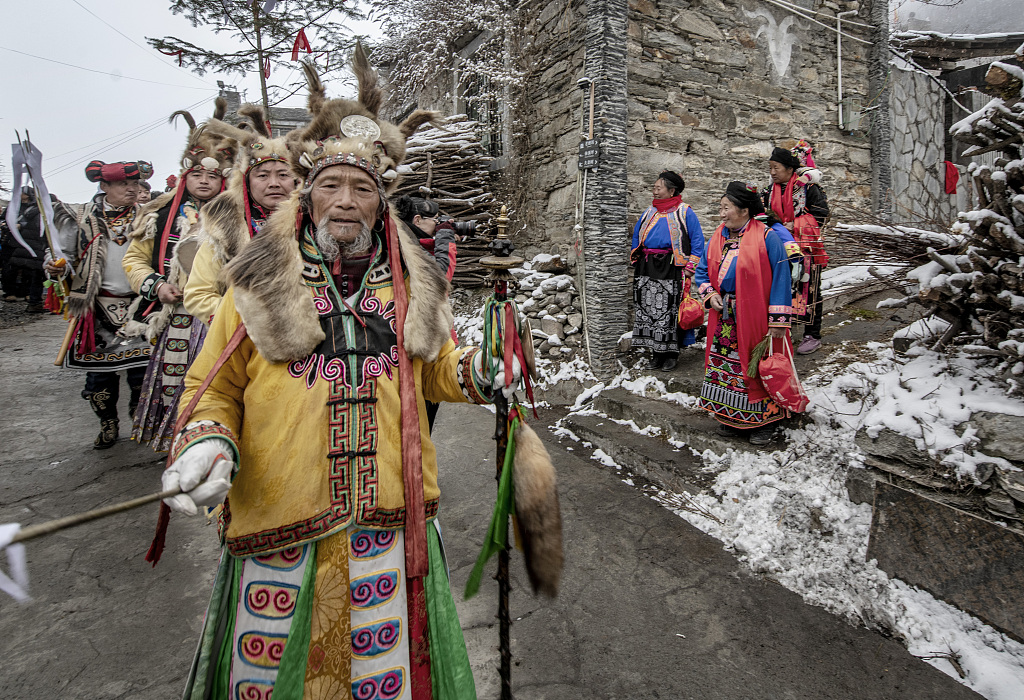
Ethnic Qiang people celebrate the Guairu Festival, which falls on Feb. 2 according to the traditional Chinese calendar, to pray for good luck and safety in the year ahead. /CFP
Ethnic Qiang people celebrate the Guairu Festival, which falls on Feb. 2 according to the traditional Chinese calendar, to pray for good luck and safety in the year ahead. /CFP
They use sheepskin to make drums, build watchtowers composed of four, five, six or more sides, celebrate their own women's festival and version of New Year, and pass their traditions down from generation to generation orally and in person.
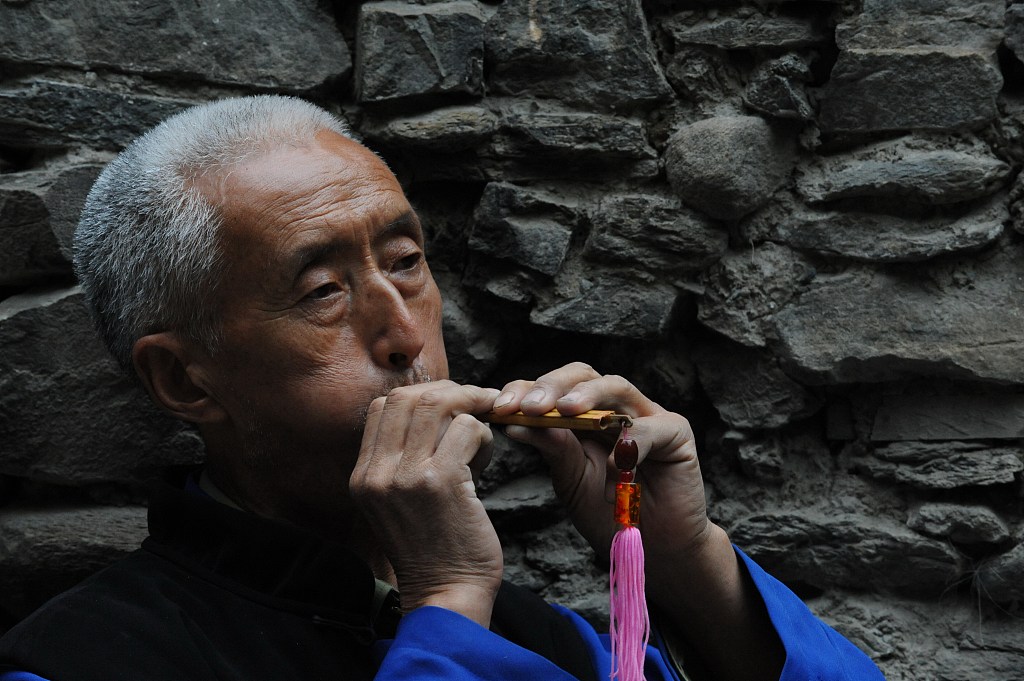
An elderly man plays the qiangdi, a traditional Chinese flute, at Taoping Village in Wenchuan County, Sichuan. /CFP
An elderly man plays the qiangdi, a traditional Chinese flute, at Taoping Village in Wenchuan County, Sichuan. /CFP
The qiangdi is a vertical flute with six small holes that is made from local bambusa bamboo. This ancient musical instrument is believed to date back more than 2,000 years.
It produces clear, high-pitched notes, often creating a feeling of melancholy and exhaustion. We know it was popular during the Tang (618-907) and Song dynasties as many well-known poets cited it when expressing their feelings of longing for home. It is mainly used in solo musical performances or as a form of accompaniment to dances during festivals.
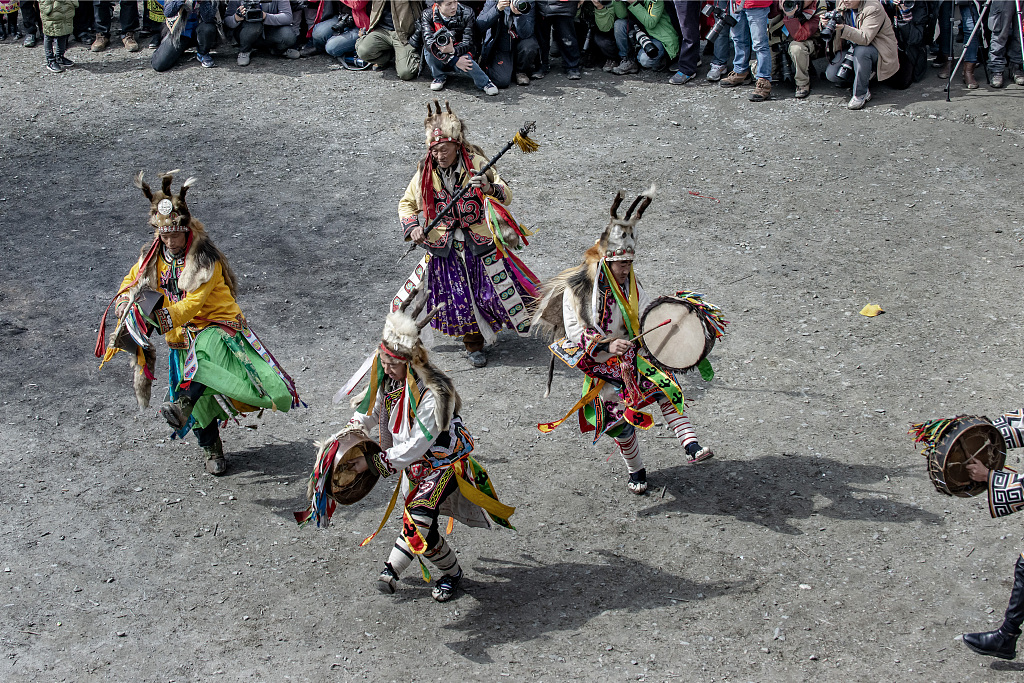
Four men perform a sheepskin drum dance during the Guairu Festival celebrations in Puxi Village, Lixian County, Sichuan. /CFP
Four men perform a sheepskin drum dance during the Guairu Festival celebrations in Puxi Village, Lixian County, Sichuan. /CFP
The sheepskin drum dance is another staple at festive celebrations organized by the Qiang. Men wear furry skin hats with long pheasant tail feathers and hold a round flat drum made from sheep skin. They shake their knees and heads to the beat of the drum, creating a tense but festive atmosphere.
Festivals are one of the main ways the Qiang people showcase and pass down their culture. They make special snacks, hold large banquets and tell legendary stories of their ancestors through song and dance.
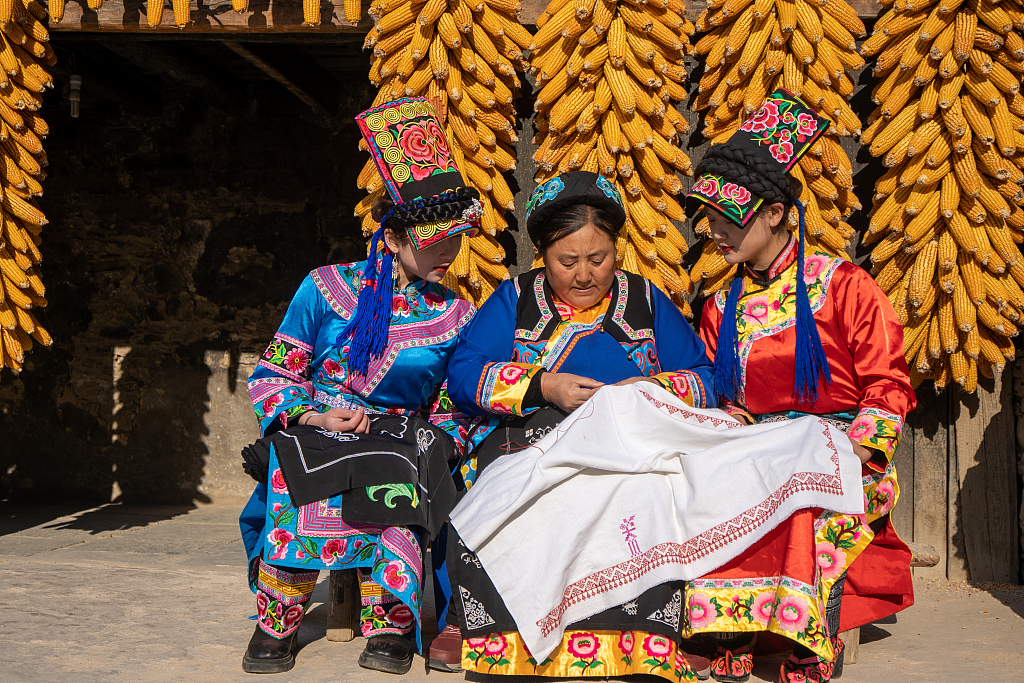
Three Qiang women wear traditional costumes with colorful Qiang embroidery. /CFP
Three Qiang women wear traditional costumes with colorful Qiang embroidery. /CFP
The Qiang people own four intangible cultural heritage items at a national level and 18 at a provincial level. The Qiang New Year was accredited in UNESCO's List of Intangible Cultural Heritage in Need of Urgent Safeguarding in 2009.
To better preserve and promote their vibrant culture, the Qiang cultural ecological protection zone was approved in 2019, covering three counties in the Aba (Ngawa) Tibetan and Qiang Autonomous Prefecture and four counties in Mianyang City.
Authorities in Sichuan's Maoxian County have set up a Qiang City scenic spot to display the buildings, customs, clothes and crafts of this treasured ethnic group. Qiang City has offered nearly 1,000 jobs to local people and its intangible cultural heritage training center has helped more than 400 residents master related skills and land jobs.
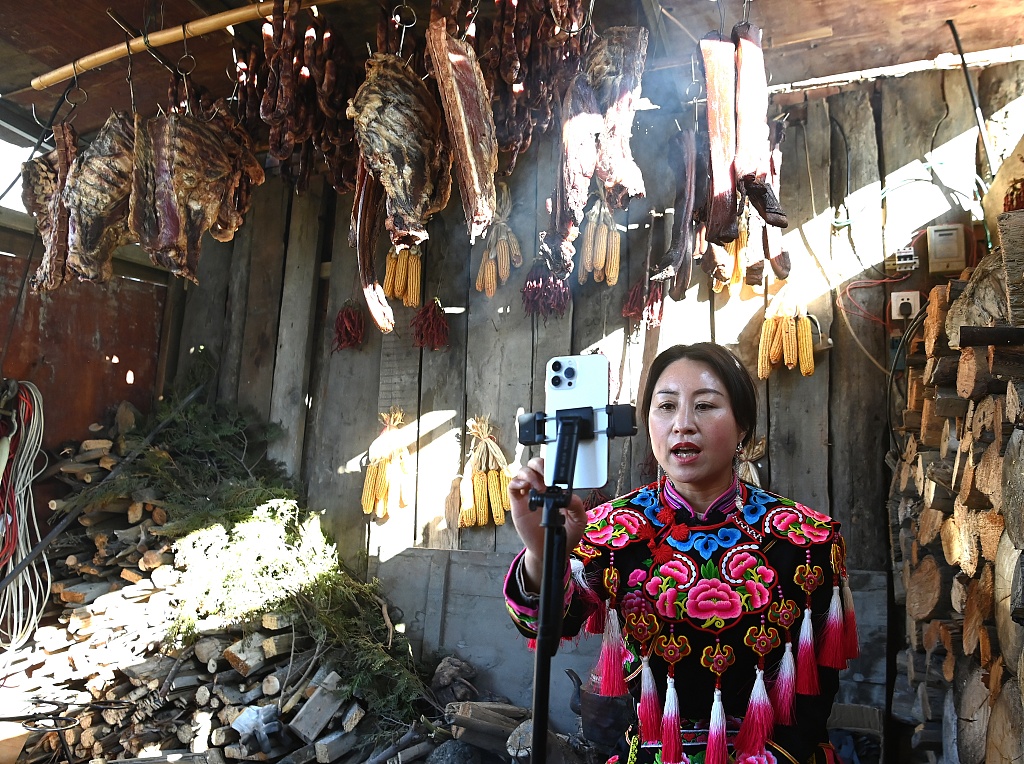
A Qiang woman in ethnic costume sells cured meat on a livestream platform. /CFP
A Qiang woman in ethnic costume sells cured meat on a livestream platform. /CFP